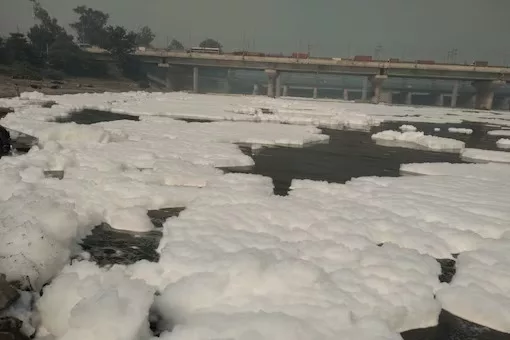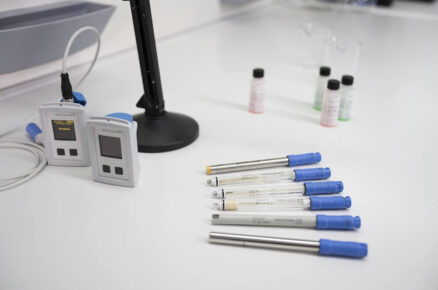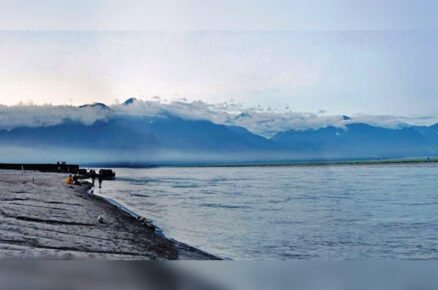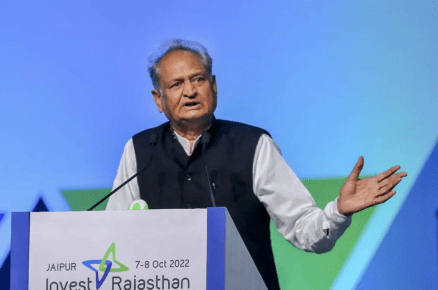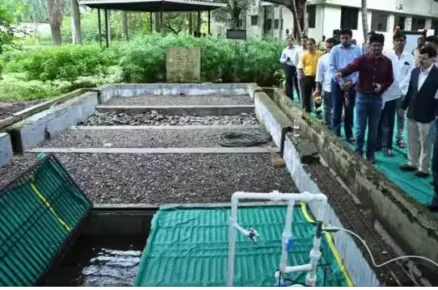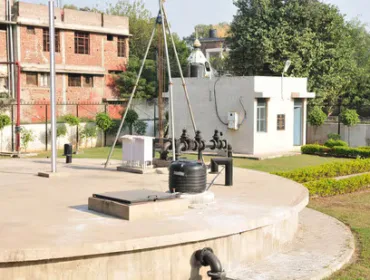After a long wait and missed deadlines, Delhi’s largest sewage plant is set to begin trial runs in November. The plant constructed in Okhla will pump out 564 million litres of treated water daily into the Yamuna River.
According to G Asok Kumar, Director General (DG), National Mission for Clean Ganga (NMCG), the work is completed and the water inflow into the plant will begin by November 15. “By next month, many drains which discharge dirty water into Yamuna will get blocked, as the water will be diverted to the Sewage Treatment Plant (STP). So, we expect sufficient improvement in the quality of the river water by December,” he said.
With a capacity of 564 MLD, the Okhla STP is not only India’s largest, but one of the biggest sewage treatment plants in Asia. It was initially expected to be completed by December 2023, but the deadline was later extended to July this year. According to officials, the pending financial issues with the Delhi government, which held the project, have been resolved. Although the STP will start releasing treated water into Yamuna by November, it will take at least a few weeks for it to stabilise. The treatment of sludge and biogas generation would take another few months, and could begin by March next year.
A large amount of sewage and industrial effluents is dumped into Yamuna daily through multiple drains (nullahs) turning it into one of the most polluted tributaries of Ganga. This is most evident during the festive season in November, when a layer of toxic foam floats across the river while devotees take a dip.
According to the NMCG Chief, all the new STPs, along with upgradation of the existing ones, could significantly improve the water quality in Yamuna flowing in Delhi over the next two years. Two more STPs — Rithala (182 MLD) and Kundli (204 MLD) — have already begun trial runs, and the 318 MLD Coronation Pillar Sewage Treatment Plant was completed last year.
“Yamuna and its tributaries are now our priority. We are taking steps to clean the Hindon river. We have sanctioned around five-six STPs, which should be ready in another 1.5 years, and will improve the water quality significantly. Two of them are about to get completed, while the others are in different stages. The one at Saharanpur and Meerut have high capacity. Hopefully by 2025, the entire Ganga system should be fairly cleaned up,” Kumar said.
As many as 12 projects have been taken up under Namami Gange for the treatment of over 1,200 MLD sewage in Delhi to abate the pollution in Yamuna. Its major tributary — Hindon river — has also been identified as Priority I polluted river stretch. Under PRAYAG, an online dashboard launched this year, the NMCG now tracks the inflow and outflow of water for over 100 STPs in Yamuna and Ganga in real-time, and whether they are working up to the standard for which they were designed.
Of the total 39 STPs, as many as 25 do not meet the revised water quality standards as of September 2023. However, according to the NMCG, at least 35 of them (except for two under trial run), meet the design standards (for water quality) under which they were initially built. The National Green Tribunal (NGT) had revised the water quality standards in 2019 and directed all STPs in the country to abide by the new norms. As per the new standards, the Biochemical Oxygen Demand (BOD) and Total Suspended Solids (TSS) should be below 10 mg/L.
“We are now in the process of insisting the Delhi Jal Board to upgrade the existing STPs. There are about 39 such STPs, which were built as per previous standards. It may take time, since the new standards are yet to be notified. Meanwhile, all the new STPs being approved in the stretch from Okhla Barrage to Agra are being sanctioned with far higher standards of BOD: TSS at less than 5 mg/L,” he added.
Source & image courtesy: https://www.news18.com




